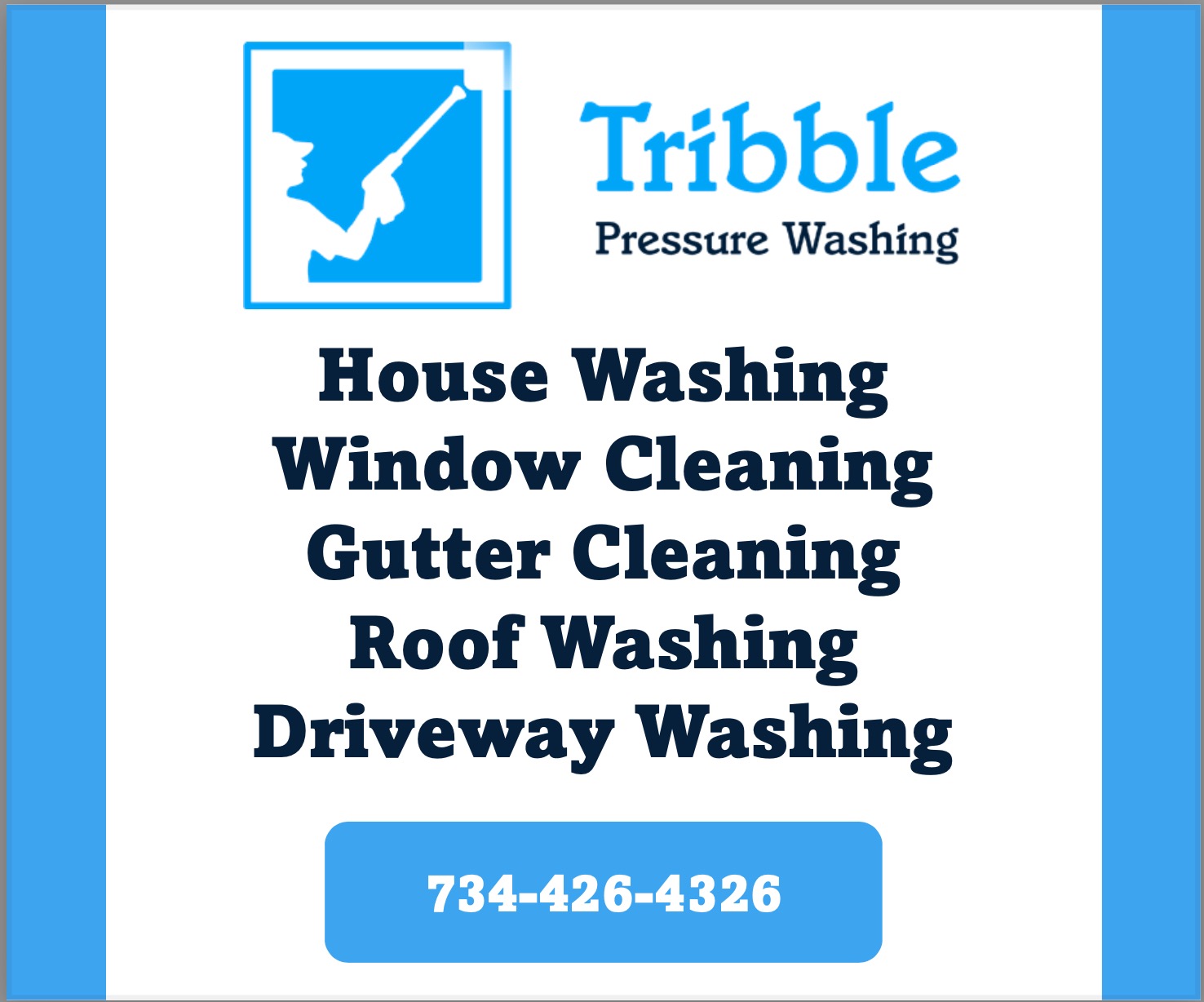2024 Water Quality Report for City of Saline
Water Supply Serial Number: 05900
This report covers the drinking water quality for the City of Saline for the 2024 calendar year. This information is a snapshot of the quality of the water that we provided to you in 2024. Included are details about where your water comes from, what it contains, and how it compares to United States Environmental Protection Agency (U.S. EPA) and state standards.
Your water comes from five groundwater wells, each over 108 feet deep, and draw water from glacial deposits. We distributed 1,158,000 gallons of water on average per day in 2024. On April 13th we reached our peak day and pumped 2,275,000 gallons of water. In 2024 we produced a total of 423,981,000 gallons of water.
The State performed an assessment of our source water to determine the susceptibility or the relative potential of contamination. The susceptibility rating is on a seven-tiered scale from “very-low” to “very-high” based on geologic sensitivity, well construction, water chemistry and contamination sources. The susceptibility of our source is moderately high.
There are no significant sources of contamination in our water supply. The City of Saline is making efforts to protect our sources by participating in the Source Water Protection Program and remediation of contamination of known sources of contamination within the Wellhead Protection Area to prevent movement of contamination to municipal wells.
If you would like to know more about this report, please contact: Bill Briggs, City of Saline, 100 N Harris Street, Saline, Michigan 48176, 734-944-2003 x2324, [email protected].
Contaminants and their presence in water: Drinking water, including bottled water, may reasonably be expected to contain at least small amounts of some contaminants. The presence of contaminants does not necessarily indicate that water poses a health risk. More information about contaminants and potential health effects can be obtained by calling the U.S. EPA’s Safe Drinking Water Hotline (800-426-4791).
Vulnerability of sub-populations: Some people may be more vulnerable to contaminants in drinking water than the general population. Immuno-compromised people, such as persons with cancer undergoing chemotherapy, persons who have undergone organ transplants, people with HIV/AIDS or other immune systems disorders, some elderly, and infants can be particularly at risk from infections. These people should seek advice about drinking water from their health care providers. U.S. EPA/Center for Disease Control guidelines on appropriate means to lessen the risk of infection by Cryptosporidium and other microbial contaminants are available from the Safe Drinking Water Hotline (800-426-4791).
Sources of drinking water: The sources of drinking water (both tap water and bottled water) include rivers, lakes, streams, ponds, reservoirs, springs, and wells. Our water comes from wells. As water travels over the surface of the land or through the ground, it dissolves naturally occurring minerals and, in some cases, radioactive material, and can pick up substances resulting from the presence of animals or from human activity.
Contaminants that may be present in source water include:
- Microbial contaminants, such as viruses and bacteria, which may come from sewage treatment plants, septic systems, agricultural livestock operations and wildlife.
- Inorganic contaminants, such as salts and metals, which can be naturally occurring or result from urban stormwater runoff, industrial or domestic wastewater discharges, oil and gas production, mining or farming.
- Pesticides and herbicides, which may come from a variety of sources such as agriculture and residential uses.
- Radioactive contaminants, which can be naturally occurring or be the result of oil and gas production and mining activities.
- Organic chemical contaminants, including synthetic and volatile organic chemicals, which are by-products of industrial processes and petroleum production, and can also come from gas stations, urban stormwater runoff, and septic systems.

- In order to ensure that tap water is safe to drink, the U.S. EPA prescribes regulations that limit the levels of certain contaminants in water provided by public water systems. Federal Food and Drug Administration regulations establish limits for contaminants in bottled water which provide the same protection for public health.
Water Quality Data
The table below lists all the drinking water contaminants that we detected during the 2024 calendar year. The presence of these contaminants in the water does not necessarily indicate that the water poses a health risk. Unless otherwise noted, the data presented in this table is from testing done January 1 through December 31, 2024. The State allows us to monitor for certain contaminants less than once per year because the concentrations of these contaminants are not expected to vary significantly from year to year. All the data is representative of the water quality, but some are more than one year old.
Terms and abbreviations used below:
- Maximum Contaminant Level Goal (MCLG): The level of a contaminant in drinking water below which there is no known or expected risk to health. MCLGs allow for a margin of safety.
- Maximum Contaminant Level (MCL): The highest level of a contaminant that is allowed in drinking water. MCLs are set as close to the MCLGs as feasible using the best available treatment technology.
- Maximum Residual Disinfectant Level (MRDL): The highest level of a disinfectant allowed in drinking water. There is convincing evidence that addition of a disinfectant is necessary for control of microbial contaminants.
- Maximum Residual Disinfectant Level Goal (MRDLG): The level of a drinking water disinfectant below which there is no known or expected risk to health. MRDLGs do not reflect the benefits of the use of disinfectants to control microbial contaminants.
- N/A: Not applicable
- ND: not detectable at testing limit
- ppm: parts per million or milligrams per liter
- ppb: parts per billion or micrograms per liter
- ppt: parts per trillion or nanograms per liter
- Action Level (AL): The concentration of a contaminant which, if exceeded, triggers treatment or other requirements that a water system must follow.
1Monitoring Data for Regulated Contaminants
| Regulated Contaminant | MCL, TT, or MRDL | MCLG or MRDLG | Level Detected | Range | Year Sampled | Violation Yes/No | Typical Source of Contaminant |
| Nitrate (ppm) | 10 | 10 | ND | N/A | 2024 | No | Runoff from fertilizer use; Leaching from septic tanks, sewage; Erosion of natural deposits |
| Fluoride (ppm) | 4 | 4 | 0.6 | 0.0-1.1 | 2024 | No | Erosion of natural deposits; Water additive which promotes strong teeth; Discharge from fertilizer and aluminum factories |
| TTHM Total Trihalomethanes (ppb) | 80 | N/A | 12 | N/A | 2024 | No | Byproduct of drinking water disinfection |
| HAA5 Haloacetic Acids (ppb) | 60 | N/A | ND | N/A | 2024 | No | Byproduct of drinking water disinfection |
| Chlorine[1] (ppm) | 4 | 4 | 1.1 | 0.0-2.6 | 2024 | No | Water additive used to control microbes |
| Uranium (ppb) | 30 | 0 | <1.0 | N/A | 2024 | No | Some people who drink water containing uranium in excess of the MCL over many years may have an increased risk of getting cancer and kidney toxicity. |
| Sodium (ppm) | N/A | N/A | 24 | N/A | 2023 | No | Erosion of natural deposits. |
| Per- and polyfluoroalkyl substances (PFAS) | |||||||
| Regulated Contaminant | MCL, TT, or MRDL | MCLG or MRDLG | Level Detected | Range | Year Sampled | Violation Yes/No | Typical Source of Contaminant |
| Hexafluoropropylene oxide dimer acid (HFPO-DA) (ppt) | 370 | N/A | ND | N/A | 2024 | No | Discharge and waste from industrial facilities utilizing the Gen X chemical process |
| Perfluorobutane sulfonic acid (PFBS) (ppt) | 420 | N/A | ND | N/A | 2024 | No | Discharge and waste from industrial facilities; stain-resistant treatments |
| Perfluorohexane sulfonic acid (PFHxS) (ppt) | 51 | N/A | ND | N/A | 2024 | No | Firefighting foam; discharge and waste from industrial facilities |
| Perfluorohexanoic acid (PFHxA) (ppt) | 400,000 | N/A | ND | N/A | 2024 | No | Firefighting foam; discharge and waste from industrial facilities |
| Perfluorononanoic acid (PFNA) (ppt) | 6 | N/A | ND | N/A | 2024 | No | Discharge and waste from industrial facilities; breakdown of precursor compounds |
| Perfluorooctane sulfonic acid (PFOS) (ppt) | 16 | N/A | ND | N/A | 2024 | No | Firefighting foam; discharge from electroplating facilities; discharge and waste from industrial facilities |
| Perfluorooctanoic acid (PFOA) (ppt) | 8 | N/A | ND | N/A | 2024 | No | Discharge and waste from industrial facilities; stain-resistant treatments |
| Inorganic Contaminant Subject to Action Levels (AL) | Action Level | MCLG | Your Water[2] | Range of Results | Year Sampled | Number of Samples Above AL | Typical Source of Contaminant |
| Lead (ppb) | 15 | 0 | 0 | 0 ppb – 1 ppb | 2024 | 0 | Lead service lines, corrosion of household plumbing including fittings and fixtures; Erosion of natural deposits |
| Copper (ppm) | 1.3 | 1.3 | 0.7 | 0 ppm – 0.8 ppm | 2024 | 0 | Corrosion of household plumbing systems; Erosion of natural deposits |
Additional Monitoring
Unregulated contaminants are those for which the U.S. EPA has not established drinking water standards. Monitoring helps the U.S. EPA determine where certain contaminants occur and whether regulation of those contaminants is needed.
| Unregulated Contaminant Name | Average Level Detected | Range | Year Sampled | Comments |
| Chloride (ppm) | 30.4 | 21.1 – 60.4 | 2024 | Results of monitoring are available upon request |
| Sulfate (ppm) | 21.2 | 15.9- 31.1 | 2024 | Results of monitoring are available upon request |
| Hardness (ppm) | 129 | 70- 482 | 2024 | Results of monitoring are available upon request |
Information about lead: Lead can cause serious health effects in people of all ages, especially pregnant people, infants (both formula-fed and breastfed), and young children. Lead in drinking water is primarily from materials and parts used in service lines and in home plumbing. The City of Saline is responsible for providing high quality drinking water and removing lead pipes but cannot control the variety of materials used in the plumbing in your home. Because lead levels may vary over time, lead exposure is possible even when your tap sampling results do not detect lead at one point in time. You can help protect yourself and your family by identifying and removing lead materials within your home plumbing and taking steps to reduce your family’s risk. Using a filter, certified by an American National Standards Institute accredited certifier to reduce lead, is effective in reducing lead exposures. Follow the instructions provided with the filter to ensure the filter is used properly. Use only cold water for drinking, cooking, and making baby formula. Boiling water does not remove lead from water. Before using tap water for drinking, cooking, or making baby formula, flush your pipes for several minutes. You can do this by running your tap, taking a shower, doing laundry or a load of dishes. If you have a lead service line or galvanized requiring replacement service line, you may need to flush your pipes for at least 5 minutes to flush water from both your home plumbing and the lead service line. If you are concerned about lead in your water and wish to have your water tested, contact the Bil Briggs, City of Saline at 734-944-2003 x2324. Information on lead in drinking water, testing methods, and steps you can take to minimize exposure is available at https://www.epa.gov/safewater/lead.
The city of Saline collected 21 sets of samples from 21 unique sites. Samples from 20 sites were used to calculate the 90th percentiles values. The following samples were excluded from the 90th percentile calculations:
| Site Address | Collection Date | Sample Number | Lead (ppb) | Copper (ppm) | Exclusion Reason |
| 302 North Harris (1st and 5th liter) | 7/30/2024 | 24G0507-01 24G0507-02 | 0 0 | 0.40 0.17 | Supply has enough higher tier sites for compliance |
For the period this report covers, our water supply currently has 42 lead service lines and 1220 service lines of unknown material out of a total of 3,164 service lines. If you would like to know more about this report, please contact: Bill Briggs, City of Saline, 100 N Harris St., Saline, Michigan. 734-944-2003, [email protected].
Monitoring and Reporting to the Department of Environment, Great Lakes, and Energy (EGLE) Requirements: The State of Michigan and the U.S. EPA require us to test our water on a regular basis to ensure its safety. We met all the monitoring and reporting requirements for 2024.
We will update this report annually and will keep you informed of any problems that may occur throughout the year, as they happen. Copies are available at City Hall.
We invite public participation in decisions that affect drinking water quality. The City Council generally conducts meetings on the first and third Mondays of each month. For more information about your water, or the contents of this report, contact Bill Briggs at 734-944-2003 x2324. For more information about safe drinking water, visit the U.S. EPA at http://www.epa.gov/safewater.
[1] The chlorine “Level Detected” was calculated using a running annual average.
[2] Ninety (90) percent of the samples collected were at or below the level reported for our water.





 8123 Main St Suite 200 Dexter, MI 48130
8123 Main St Suite 200 Dexter, MI 48130

